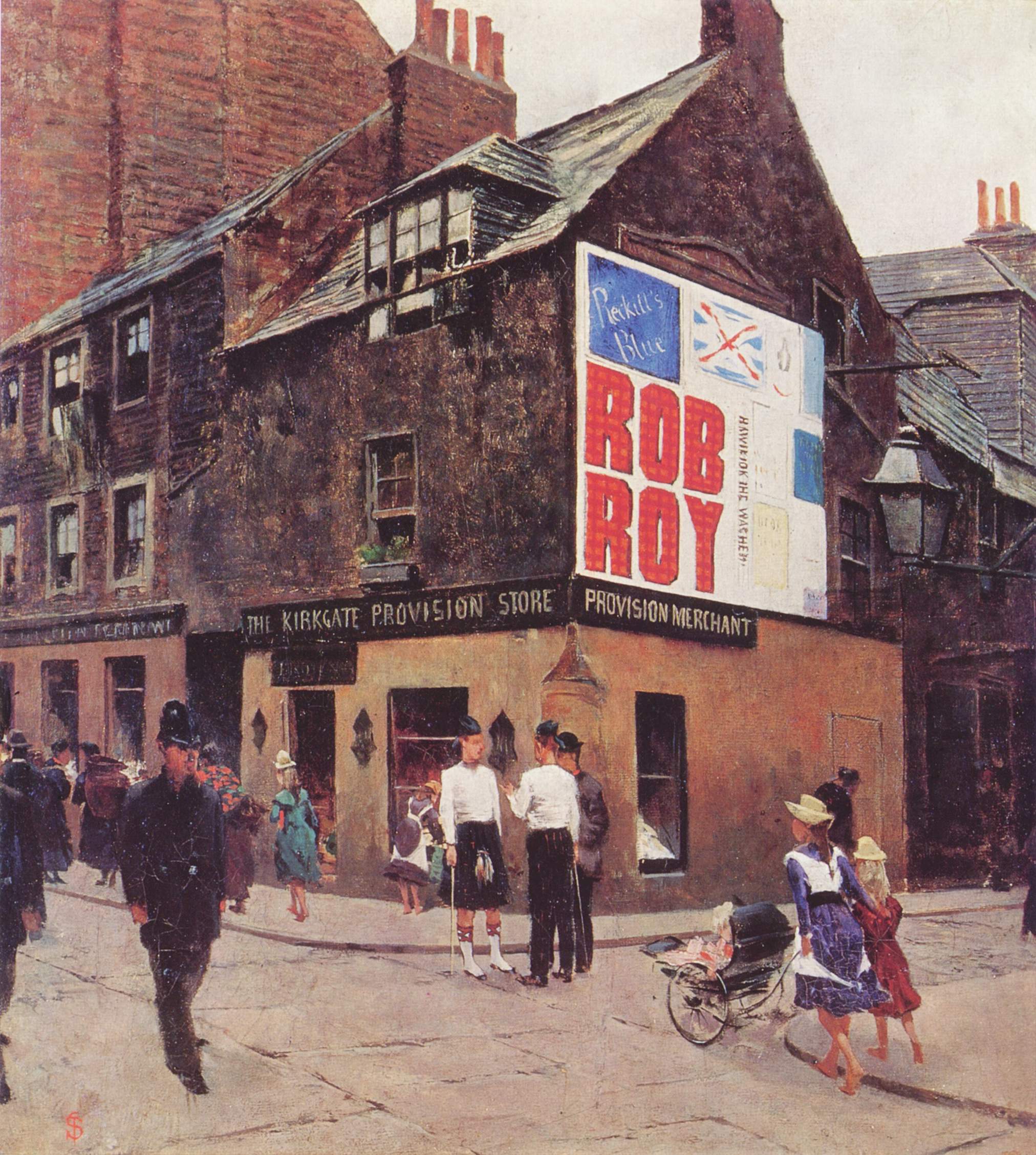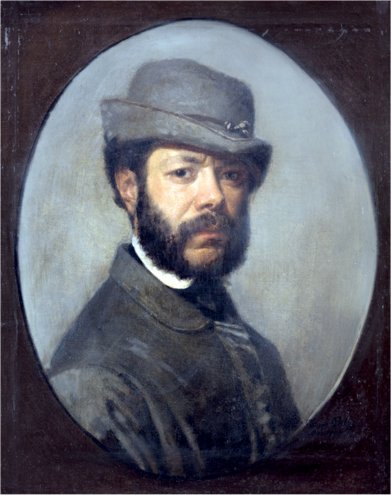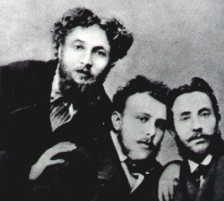|
Galleria D'arte Moderna Ricci Oddi
The Galleria d'arte moderna Ricci Oddi (Ricci Oddi Gallery of Modern Art) is an art museum, located on via San Siro #13 in Piacenza, region of Emilia-Romagna, Italy. The museum displays a collection of Modern Art from the last two hundred years. The first works acquired by the wealthy aristocratic Art collector, collector from Piacenza, Giuseppe Ricci Oddi, upon the recommendation of the sculptor Oreste Labò, were ''Pecore tosate (Filippini), Pecore tosate'' by Francesco Filippini and ''After Novara'' by Gaetano Previati. History The gallery was founded in its own building due to the patronage of the local jurist and collector, Giuseppe Ricci Oddi (1868–1936). The building was constructed in 1931 using designs by Giulio Ulisse Arata on land adjacent to a deconsecrated convent, donated by the commune. The collections have expanded over the decades. The museum has today about 400 works of many local, mostly Italian, and some international painters. Among the artists of the 19t ... [...More Info...] [...Related Items...] OR: [Wikipedia] [Google] [Baidu] |
Ricci Oddi
Ricci () is an Italian surname. Notable Riccis Arts and entertainment * Antonio Ricci (painter) (c.1565–c.1635), Spanish Baroque painter of Italian origin * Christina Ricci (born 1980), American actress * Clara Ross Ricci (1858-1954), British composer * Federico Ricci (1809–77), Italian composer * Franco Maria Ricci (1937–2020), Italian art publisher * Italia Ricci (born 1986), Canadian actress * Jason Ricci (born 1974), American blues harmonica player * Lella Ricci (1850–71), Italian singer * Luigi Ricci (1805–59), Italian composer * Luigi Ricci (1893–1981), Italian vocal coach * Luigi Ricci-Stolz (1852–1906), Italian composer * Marco Ricci (1676–1730), Italian Baroque painter * Nahéma Ricci, Canadian actress * Nina Ricci (designer) (1883–1970), French fashion designer * Nino Ricci (born 1959), Canadian novelist * Regolo Ricci (born 1955), Canadian painter and illustrator * Romina Ricci (born 1978), Argentine actress * Ruggiero Ricci (1918–2012), American v ... [...More Info...] [...Related Items...] OR: [Wikipedia] [Google] [Baidu] |
Telemaco Signorini
Telemaco Signorini (; August 18, 1835 – February 10, 1901) was an Italian artist who belonged to the group known as the Macchiaioli. Biography He was born in the Santa Croce quarter of Florence, and showed an early inclination toward the study of literature, but with the encouragement of his father, Giovanni Signorini (1808–1864), a court painter for the Grand Duke of Tuscany, he decided instead to study painting.Steingräber, E., & Matteucci, G. 1984, p. 115 In 1852 he enrolled at the Florentine Academy, and by 1854 he was painting landscapes en plein air. The following year he exhibited for the first time, showing paintings inspired by the works of Walter Scott and Machiavelli at the Società Promotrice delle Belle Arti. In 1855, he began frequenting the Caffè Michelangiolo in Florence, where he met Giovanni Fattori, Silvestro Lega, Saverio Altamura and several other Tuscan artists who would soon be dubbed the Macchiaioli. The Macchiaioli, dissatisfied with the a ... [...More Info...] [...Related Items...] OR: [Wikipedia] [Google] [Baidu] |
Francesco Paolo Michetti
Francesco Paolo Michetti (October 2, 1851 – March 5, 1929) was an Italian painter known especially for his genre art, genre works. Biography He was born in Tocco da Casauria in the Province of Chieti. His father having died when he was a boy, Michetti was forced to work with a local artisan. In 1868, Michetti was awarded a stipend by the province to study at the Accademia (now ''Istituto'') in Naples under Domenico Morelli. Among his colleagues was Eduardo Dalbono. There he also interacted with Filippo Palizzi, Giuseppe De Nittis, and Marco De Gregorio, artists of the School of Resina. Disciplinary problems soon caused Michetti to return to Chieti. He began to spend time in Francavilla a Mare, which by 1878 would be his residence. He traveled to Paris, encouraged and supported by De Nittis, by the patron Beniamino Rotondo, and by the art merchant Reutlinger. In Paris, he exhibited in the Salon of 1872: ''Ritorno dall’erbaggio'', ''Dream of Innocence'', and ''The Pumpkin Harve ... [...More Info...] [...Related Items...] OR: [Wikipedia] [Google] [Baidu] |
Filippo Palizzi
Filippo Palizzi (16 June 1818, Vasto – 11 September 1899, Naples) was an Italian painter, known for his rural genre scenes with animals, mostly goats. His brothers, Francesco Paolo, Giuseppe and Nicola, also became painters. Biography He was the fifth of thirteen children born to Antonio Palizzi, a lawyer, and his wife Doralice née Del Greco, an amateur musician. In 1836, he joined his brother Giuseppe in Naples and, the following year, was admitted to the Royal Institute of Fine Arts. He began his studies with the professor of landscape painting, Gabriele Smargiassi, but they soon had a falling out, with major disagreements about not only the nature of art, but politics as well. As a result, he withdrew from the Academy to attend the private school of the painter Giuseppe Bonolis. In 1839, he had his first showing, at the Academy, and one of his works was purchased by the Duchess of Berry.Angelo Ricciardi, ''Filippo Palizzi e il suo tempo'', Vasto, Palazzo D'Avalos, 1988 ... [...More Info...] [...Related Items...] OR: [Wikipedia] [Google] [Baidu] |
Domenico Morelli
Domenico Morelli (4 August 182313 August 1901) was an Italians, Italian painter, who mainly produced historical and religious works. Morelli was immensely influential in the arts of the second half of the 19th century, both as director of the Accademia di Belle Arti di Napoli, Accademia di Belle Arti in Naples, but also because of his rebelliousness against institutions: traits that flourished into the passionate, often patriotic, Romanticism, Romantic and later Symbolism (arts), Symbolist subjects of his canvases. Morelli was the teacher of Vincenzo Petrocelli, Ulisse Caputo, and Anselmo Gianfanti. Biography He was born to a poor family in Naples. His mother had hoped he would become a priest. His precocious talent was noted, and he was enrolled at the Royal Academy of Fine Arts in Naples in 1836–1846, where he befriended Francesco Saverio Altamura, Francesco Altamura. His early works contain imagery drawn from the Middle Ages, Medieval stories and Romantic poetry, Romantic po ... [...More Info...] [...Related Items...] OR: [Wikipedia] [Google] [Baidu] |
Antonio Mancini
Antonio Mancini (14 November 1852 – 28 December 1930) was an Italian painter. Biography Mancini was born in Rome, Papal States, and showed precocious ability as an artist. At the age of twelve, he was admitted to the Institute of Fine Arts in Naples, where he studied under Domenico Morelli (1823–1901), a painter of historical scenes who favored dramatic chiaroscuro and vigorous brushwork, and Filippo Palizzi. Mancini developed quickly under their guidance, and in 1872, he exhibited two paintings at the Paris Salon. Mancini worked at the forefront of the ''Verismo'' movement, an indigenous Italian response to 19th-century Realist aesthetics. His usual subjects included children of the poor, juvenile circus performers, and musicians he observed in the streets of Naples. His portrait of a young acrobat in ''Il Saltimbanco'' (1877–78) captures the fragility of the boy whose impoverished childhood is spent entertaining pedestrian crowds. In 1871 two of his works, exhibite ... [...More Info...] [...Related Items...] OR: [Wikipedia] [Google] [Baidu] |
François-Auguste Ravier
François-Auguste Ravier (4 May 1814 – 26 June 1895) was a French landscape painter. Biography He was born in Lyon. His parents encouraged him to prepare for a legal career, so he went to Paris. While studying law, from 1833 to 1839, he also devoted himself to painting; enrolling at the École des Beaux-Arts, where he studied with Théodore Caruelle d'Aligny. In 1835, he visited Royat, and became acquainted with Jean-Baptiste Camille Corot, who had a great influence on his early style. from the Bénézit Dictionary From 1840 to 1845, at the urging of Corot, he worked in Italy, where he mingled with the French art community. Although he spent most of his time wandering through the countryside painting, he apparently never exhibited his works there. After returning to France, h ... [...More Info...] [...Related Items...] OR: [Wikipedia] [Google] [Baidu] |
Antonio Fontanesi
Antonio Fontanesi (23 February 1818 – 17 April 1882) was an Italian painter who lived in Meiji period Japan between 1876 and 1878. He introduced European oil painting techniques to Japan, and exerted a significant role in the development of modern Japanese ''yōga'' (Western style) painting. He is known for his works in the romantic style of the French Barbizon school. Early life Fontanesi was born in Reggio Emilia, Emilia-Romagna, and trained with the landscape painters Prospero Minghetti and Vincenzo Carnevali. From 1841 to 1846 he made theatre sets and began painting landscapes. In 1848, he joined a group of Garibaldian volunteers, that went to Milan to fight with the Manara Legion, against the Austrians. In 1859, he was again to briefly join Cavour's armed forces in Bologna. In 1850, he moved to Geneva, where he stayed until 1865. His main area of interest was landscape painting, which he expanded on after visiting the 1855 Exposition Universelle in Paris. In 1863, he ... [...More Info...] [...Related Items...] OR: [Wikipedia] [Google] [Baidu] |
Angelo Morbelli
Angelo Morbelli (18 July 1853, Alessandria – 7 November 1919, Milan) was an Italian painter of socially conscious Genre art, genre scenes. During his later years, he painted in the Divisionist style. Biography He was born to Giovanni Morbelli, a government official, and his wife Giovannina, née Feraris. At first he studied music, but contracted mastoiditis, which led to a progressive hearing loss. As a result, he switched to art and began taking drawing lessons from a local artist. In 1867, a grant from the City Council of Alessandria enabled him to enroll at the Brera Academy, where he studied with Giuseppe Bertini and Raffaele Casnedi.Biography of Morbelli by Rossella Canuti, from the ''Dizionario Biografico degli Italiani'' @ Treccani Upon graduating, he began to exhibit in Milan and Turin. ... [...More Info...] [...Related Items...] OR: [Wikipedia] [Google] [Baidu] |
Luigi Conconi
Luigi Conconi (Milan, 1852–1917) was an Italian painter, who is considered part of the Scapigliatura movement. Biography Luigi Conconi graduated from the Milan Polytechnic in 1874 and started work as an architect, a career that he combined from the very outset with painting. Associated with the artist Tranquillo Cremona and the Scapigliatura movement, he founded the satirical newspaper ''Guerin Meschino'' in 1882 together with Guido Pisani Dossi, Luca Beltrami and other friends. The illustrations he produced for this publication display a talent for engraving developed over the previous decade that was to win critical acclaim at the international level. He shared a studio with Gaetano Previati until 1885 and took part in the major Milanese and Venetian exhibitions during this period and the following decade. It was in the early years of the new century that he also began showing portraits and landscapes at the major international events. References * Luigi Conconi, online ... [...More Info...] [...Related Items...] OR: [Wikipedia] [Google] [Baidu] |
Daniele Ranzoni
Daniele Ranzoni (1843 in Intra, Novara – 1889 in Intra, Novara) was an Italian painter of second half of the 19th century. A leading painter of the Milanese Scapigliatura, Ranzoni is also considered as the first of the Italian Divisionists. Biography Daniele Ranzoni was born to a working-class family (his father was a cobbler), in Intra, a town today incorporated into the municipality of Verbania-Pallanza on the Piedmont side of Lake Maggiore. He was taught by Giuseppe Bertini a remarkable teacher who encouraged his pupils to sketch from nature and experiment with primary colors. During this period he met the painters Mosè Bianchi, Filippo Carcano, Luigi Luvoni, Tranquillo Cremona and the sculptor Giuseppe Grandi. His friendship and shared aesthetics with Cremona and Grandi gave rise, in the 1870s, to a revolutionary style in the visual arts, known as Scapigliatura, a movement rightly considered the first Italian avant-garde in the visual art. In fact Ranzoni is the inve ... [...More Info...] [...Related Items...] OR: [Wikipedia] [Google] [Baidu] |
Tranquillo Cremona
Tranquillo Cremona (10 April 1837 – 10 June 1878) was an Italians, Italian painter. His paintings have a windswept style, lacking the linearity of Francesco Hayez and other academics. His technique recalls the ''pittura de tocco e di macchia'' (painting of touch and dots) practiced by painters such as Titian, Rembrandt, and 18th-century Northern Italian baroque masters such as Giuseppe Maria Crespi, Francesco Guardi, Giovanni Battista Piazzetta, and Giuseppe Bazzani. Biography Early life and education He was born in Pavia and was the brother of the mathematician Luigi Cremona. He trained at the art school in Pavia with Giacomo Trécourt and Giovanni Carnovali. He moved to Venice in 1852, where he lived alongside his half-brother, the lawyer Giacomo Cremona. In 1859 Cremona moved to Piedmont to avoid military service with the Imperial Austrian Army (1806–1867), Imperial Austrian Army. After the liberation of Lombardy by the Piedmontese he settled in Milan. There he enrol ... [...More Info...] [...Related Items...] OR: [Wikipedia] [Google] [Baidu] |









